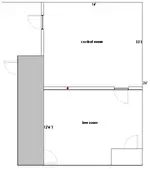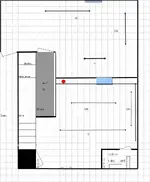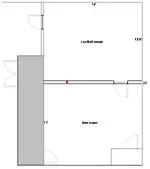i work for a concrete rail tie manufacture. We have a lot of neoprene around here... We have a lot of neoprene around here... there is a set that is 7' tall 8" thick 12" wide and is 45' angle...would these work for bass traps?
Sorry, no. This type of product is for decoupling. If its neoprene, there would be NO cells, regardless. Neoprene used for the type of application described is a solid core with an ENGINEERED DUROMETER RATING.
how is neoprene for bass, oh it's FREAKING heavy too 70+ pounds... it would be free to me... have no idea if it is open or closed cell
Actually, I would bet this is not neoprene. I'd submit it is a product called Sylomer...
 http://www.soundown.com/Sylomer/Resilient_Bedding_of_Buildings_Brochure.pdf
http://www.soundown.com/Sylomer/Resilient_Bedding_of_Buildings_Brochure.pdf
and if it is, ...man, if you do get it free, I know some people that would like to talk to you

That stuff ain't cheap. The reason is, Sylomer comes in
17 Sylomer durometers are calculated to fit any design and installation.
It's almost impossible to predict DIY applications of neoprene. The compression vs weight ratio MUST be within a certain range or it can actually make things worse...at least for LOW FREQUENCY TRANSMISSION. And since you are using for HANGING drywall, there would be no such "compression" .Which leads to this....
I wasn't planning on using RC, but we have a bunch of 1/2 thick neoprene that i was going to cut into 1 1/2" strips and put on my joist under the drywall. wasting time or will that help decouple the ceiling at all?
No. Use the RC. Much cheaper and easier to use. The problem with the strip idea is two fold. First, the strips must be fastened to the joist in such a way that the fasteners that hold the drywall to the "decouplers" do NOT touch the joists. I don't have a clue how you would impliment this. Heres the idea. Thiese are but one of many products available...but they're not cheap. RC is.
BTW, Before you hang your ceiling drywall, I'd suggest you place a couple of layers of drywall BETWEEN THE JOISTS, to add mass to the floor membrane above. Use screws and caulk all the joints.
fitZ






